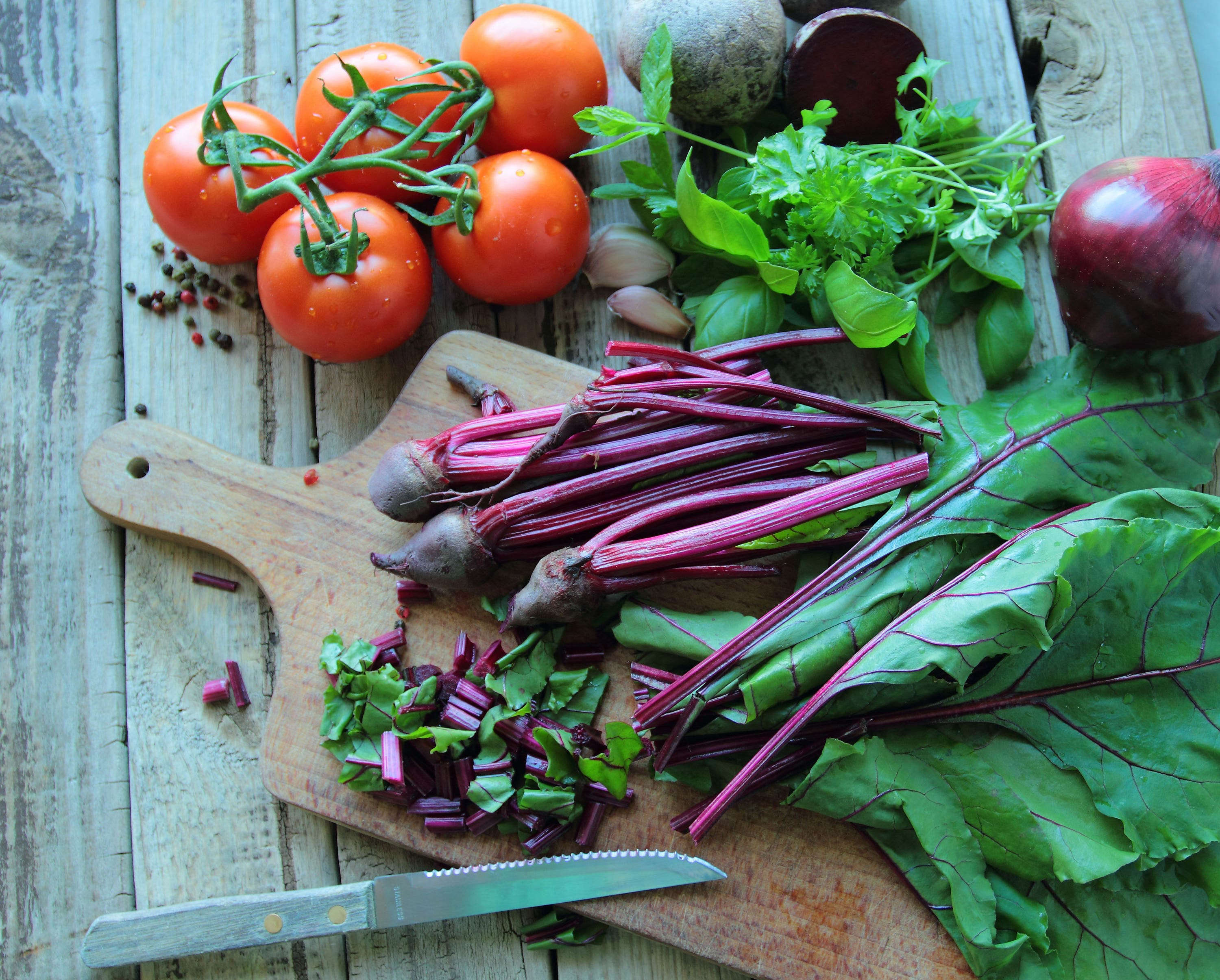
A pair of keen allotmenteers offer a guide to growing new plants from veg cuttings, fruit stones and pips.
When you’re depositing your kitchen scraps – including old spuds, vegetable seeds and stones – in the bin, or on the compost heap, think again.
There are many things you can grow again from food waste, insist gardening duo and allotmenteers Paul Anderton and Robin Daly, known on Instagram as Two Dirty Boys.
“Regrowing scraps and cuttings can reward you with fresh homegrown food which can help reduce your grocery bill,” say the pair in their new book Regrown.
“When we first started the process of regrowing, we did so in such small quantities that the cuttings generated just about enough food for Barbie’s brunch. However, if you get into the habit of continually saving potential plants before they get to your compost bin, you’ll find you are rewarded with a decent-sized harvest when the time comes.”
Armed with a windowsill and reusable containers, you can make a start on these five easy to regrow edibles, following Anderton and Daly’s guide…
1. Spring onions
They say: “This is a really easy and foolproof project. It’s great to do with the kids as the progress is fast. You’ll never throw away the base of your spring onions again.”
Top tips: Retain one inch of the root end of the vegetable for regrowing. Fill a jar with pebbles or marbles and position each cutting with the root end downwards amongst the stabilisers.
Fill the jar with water to cover the roots, but leave the top of the cuttings above the water. Place on a bright windowsill and refresh the water each day. Harvest when desired.
2. Avocado
They say: “Avocado pits get tossed into the dustbin every day – each one a perfect new seed of a future avocado tree. They make beautiful houseplants.”
Top tips: Rinse an avocado stone and gently peel away the outer skin revealing a nut-like surface. Identify the pointy end of the stone and ensure this now remains facing upwards during the next steps.
Pierce the stones with three toothpicks, evenly spaced. These will allow you to position the stone in water without full submersion.
Fill a glass or jar with water and position the stone and toothpicks so the stone is hovering at the water line (with the bottom of the stone under water). It can take several weeks for the stone to germinate and start growing so be patient.
Once roots have descended and the stone has started to grow a stem and leaves, you could choose to transplant the plant to a plant pot filled with potting mix. Keep your new avocado houseplant in a bright location and water when necessary.
3. Potatoes

They say: “We’ve all been guilty of neglecting a bag of potatoes in a dark kitchen drawer or cupboard. It’s easy to regrow these into a whole new batch of tasty spuds.”
Top tips: An out-of-date potato can be used to grow a new crop of potatoes. Use a sharp knife to cut the potato into sections, but make sure each section has its own ‘eye’ as this will be the foundation of a new plant.
Let the potato pieces dry in the open air to avoid bacterial infections. After some time, each eye should begin to sprout. The process is called chitting. You can now plant each potato piece in the earth with the eye facing upwards (four inches deep) or in a plant pot or growbag (with a 50/50 mix of compost and garden soil).
Water regularly if in pots and once the plant above ground has flowered and begun to wilt (between 70 and 120 days later), your underground potatoes are ready to be harvested
4. Tomato seeds
They say: “It’s the time of year most gardeners start thinking about their tomato seedlings. Why not grow this year’s plants from a kitchen scrap? Heirloom tomatoes are the best choice.”
Top tips: Scoop out the inner part of an overripe tomato and seeds and mix these with some water in a jam jar. Seal it and let it start to ferment for one week. This process will separate the seeds from the flesh and help fight diseases.
Strain the seeds, rinse them and lay them out on paper towels to dry for at least another week. After this time the seeds should be ready for planting. Use the tomato seeds as you would any store bought tomato seeds. Then start the process off using potting mix in seed trays.
5. Beetroot greens
They say: “It takes a lot of beetroot cuttings to grow yourself a bag of beetroot greens – but the process is fun and there’s nothing more satisfying than serving up a salad you grew on your windowsill.”
Top tips: The top inch or so of a beetroot root can be used to regrow fresh beetroot greens which are wonderful in salad or used in dishes as a spinach substitute.
Start by removing the existing wilted leaves (or use them to cook with if they’re fresh enough). Place multiple beetroot tops in a flat bottomed waterproof tray and fill the tray with a enough water that each root slice has access to water but isn’t submerged.
Within the first day or two new leaves should start to emerge. Changing the water each day will ensure the plants don’t rot. You’ll be rewarded with a mini field of fresh beetroot plants.
Harvest the leaves as and when you wish. Harvesting leaves when they are still very small makes a novel topping for canapes.
More from Lifestyle
Five Fantasy Worlds We’d Love To Explore In Real Life
For centuries, humanity has dreamed of stepping beyond the veil of the ordinary and into the extraordinary. Fantasy worlds, born from the minds of imaginative storytellers, offer tantalizing glimpses of what could be. From magical kingdoms to futuristic utopias, these fictional realms inspire awe, adventure, and wonder. Here are five fantasy worlds that we’d give anything to explore in real life:
Five Amazing Global Meals To Cure The January Blues
Whether or not you believe in Blue Monday and the January blues this week, there’s no denying that a comforting meal can elevate your mood. Food has the power to transport you across the globe, even if you're sitting at your kitchen table. Here are five amazing dishes from around the world to brighten your week and add some flavour to your day:
Five Incredible Spas Around the World
In today’s fast-paced world, taking time out for self-care is more important than ever. Spas offer a sanctuary of tranquillity, combining luxurious treatments with stunning settings to rejuvenate the mind, body, and soul. Here are five incredible spas around the world that redefine relaxation and elevate wellness to an art form:
Five Fab Wellbeing UK Destinations Ideal in January
January can be a challenging month. The festive buzz has faded, and the cold, dark days can feel endless. But it’s also the perfect time to prioritise your wellbeing. Why not embrace the new year with a rejuvenating escape? Here are five fabulous UK destinations ideal for a January wellness boost:
Five Weird Wellbeing Foods Around The World
January might be known as the month of healthier living, but you'd have to be quite brave to give some of these wellbeing delicacies a go!

Comments
Add a comment